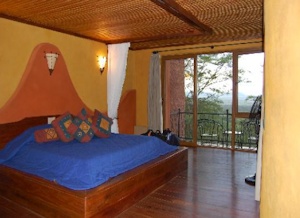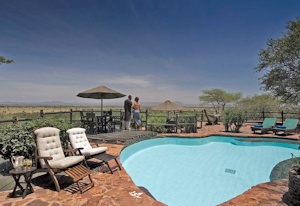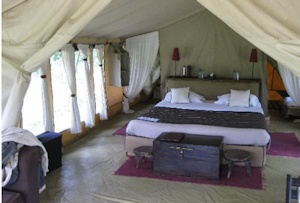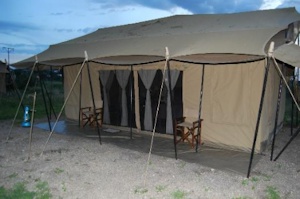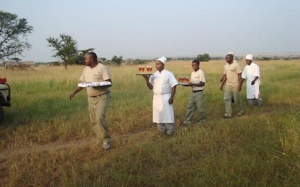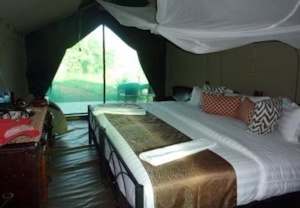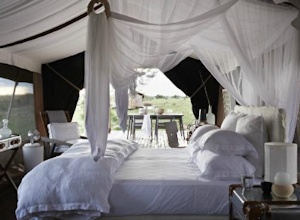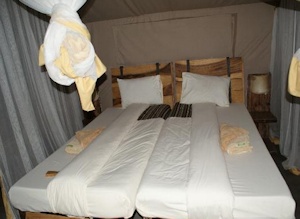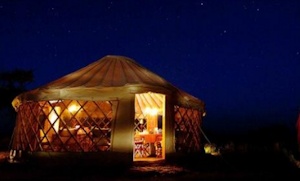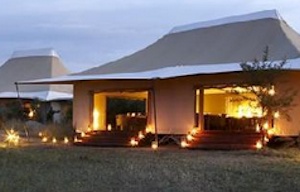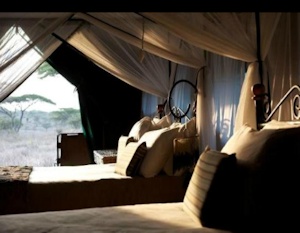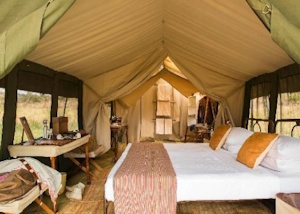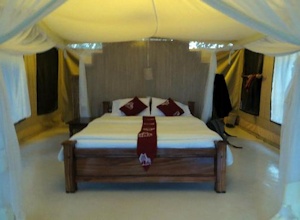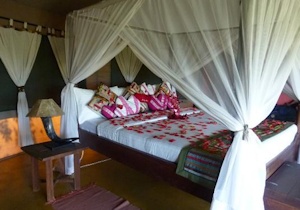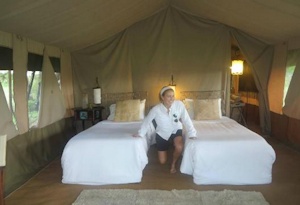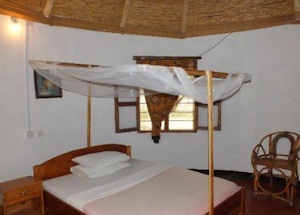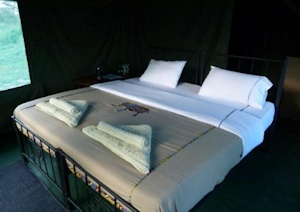The Serengeti Wildebeest Migration Safaris in Tanzania offer a more extensive, year-round experience as the migration circulates through the expansive Serengeti National Park, ideal...
Hotels & Lodges in Serengeti National Park Tanzania
Serengeti National Park offers a range of accommodations to enhance your Tanzania safaris experience. Popular Serengeti National Park hotels include Four Seasons Safari Lodge, renowned for luxury and stunning wildlife views, and Serengeti Serena Safari Lodge, celebrated for its unique architectural design and convenient access to game drives. For travelers seeking boutique options, Melia Serengeti Lodge provides eco-friendly amenities, while Singita Grumeti Reserves specializes in exclusive, upscale experiences. Budget-friendly choices, like Seronera Wildlife Lodge, offer comfort and prime locations for wildlife spotting. With options spanning from luxurious lodges to rustic camps, Serengeti National Park hotels cater to all traveler preferences, ensuring an unforgettable stay amidst Africa’s most iconic landscapes.
What are the best hotels in Serengeti National Park?
Serengeti National Park in Tanzania is one of the most incredible places on Earth to experience wildlife and nature, and it offers a variety of world-class accommodations. There isn’t a strict “best” hotel because it depends on what you want, but some famous and popular options include:
Four Seasons Safari Lodge Serengeti – This is a luxury lodge with beautifully designed rooms, private pools, and even an infinity pool overlooking a waterhole (where animals like elephants and zebras gather). You can spot animals right from the hotel! It’s perfect for people who want the best comfort with a classic safari experience.
Singita Sasakwa Lodge – This is an ultra-luxury option, offering a mix of traditional African design and modern elegance. It features individual cottages, private pools, and stunning views of the Serengeti plains. Singita is known for providing high-end service and delicious food.
Serengeti Serena Safari Lodge – For those looking for something slightly more affordable (but still luxurious), this lodge is a good choice. It’s built to blend with local surroundings, with beautiful thatched-roof huts and panoramic views of the perfect Serengeti landscape.
Serian Serengeti Camps – If you dream of staying in a more traditional safari camp, these mobile camps follow the Great Migration (a wildlife event where millions of animals move across the Serengeti). Staying here feels adventurous yet comfortable, especially in their cozy safari tents.
&Beyond Serengeti Under Canvas – A high-end mobile camp that moves to track wildlife movements. It’s designed for those seeking a thrilling and immersive safari experience while still enjoying luxury (like gourmet food and great service).
So, whether you want a comfortable lodge or a wild tented camp, Serengeti has amazing choices for every style of traveler, making it a top safari destination in Africa.
Where are the hotels located within Serengeti National Park?
Serengeti National Park is huge—about 14,750 square kilometers (or over 5,700 square miles)—and its hotels are spread throughout different areas, each providing unique access to wildlife and scenery. Here’s a brief overview of the main regions where accommodations are located:
Central Serengeti (Seronera Area): This is one of the most popular regions, as it’s great for wildlife spotting all year long. Many lodges and camps are in this area, including Serengeti Serena Safari Lodge and Four Seasons Safari Lodge. This night lodge location central serengeti is often chosen because it offers good access to rivers, grasslands, and plenty of lions, cheetahs, and leopards.
Western Corridor: Hotels here, such as Kirawira Luxury Tented Camp, are close to the Grumeti River, where you can see crocodiles and the Great Migration as the animals cross the river. This area is best visited between May and July for migration activity, making it an ideal safari destination.
North Serengeti: Camps and lodges here, like Sayari Camp, are ideal for watching migrating wildebeest and zebras cross the famous Mara River from July to October. This region is quieter and more remote, giving you a peaceful, intimate safari experience.
Southern Serengeti: This region, including Ndutu, is where many animals gather to give birth during the Great Migration (around December to March). Hotels like Sanctuary Kusini Camp are perfect for calving season, attracting predators like lions and cheetahs.
Eastern Serengeti: Less visited and more remote, this area attracts those who love off-the-beaten-path experiences. Private reserves and camps, like Namiri Plains, offer a quieter safari with fewer vehicles and tourists, enhancing the charm of the pristine wilderness area.
Choosing a location depends on the time of year and what wildlife experience you’re after. The park is so diverse that each section offers something special, making it the perfect Serengeti family safari for everyone!
What types of accommodations are available (luxury lodges, tented camps, budget options)?
Accommodations in Serengeti National Park come in many forms, ranging from super-luxurious lodges to modest camps. Here’s a breakdown of the main options:
Luxury Lodges: These are for people looking for maximum comfort while enjoying the wilderness. Examples include property-like lodges with top-notch amenities such as spacious rooms, fine dining, spas, and sometimes private pools. Some even have activity areas like observation decks or infinity pools overlooking a waterhole. For example, the Four Seasons Safari Lodge and Singita Sasakwa Lodge are perfect examples of the “luxury lodge” experience.
Tented Camps (Luxury and Mid-Range): These may sound like simple camping, but luxury tents in the Serengeti are way more comfortable than you’d expect! They often have giant tents with real beds, en-suite bathrooms, and fine dining under the stars. Mid-range tented camps (like Kati Kati Camp) offer an adventurous feeling at more affordable prices, while luxury camps (like &Beyond Serengeti Under Canvas) take comfort to a high level while blending with the wild surroundings.
Mobile Camps: Designed to move with the animals—especially the Great Migration—these camps mean you’re always close to the action. They can range from basic to very plush, depending on your budget. For example, Serian Serengeti Camps and Ubuntu Camp are mobile but very stylish and cozy, offering a unique safari getaway experience.
Budget Lodges or Camps: If you’re traveling on a budget, some options like Nyumbani Tented Camp provide simpler accommodations while still offering a great safari experience. These places usually have basic amenities but are great for wildlife enthusiasts who don’t mind fewer frills.
Public Campsites: For budget backpackers and adventure lovers, there are basic public campsites inside the park. You’ll need to bring your own gear or hire a tour operator who provides it. Facilities like bathrooms are shared, and the experience is closer to “true camping.”
So, whether you’re seeking luxury, looking for a mid-range tented experience, or on a tight budget, the lodge location central serengeti has something to match every traveler’s goal and lifestyle.
How much do hotels in Serengeti National Park typically cost?
Hotels and lodges in Serengeti National Park can vary widely in cost, depending on the type of accommodation, level of luxury, and season of the year. Generally, the prices range from around $200 per night for budget-friendly tented camps to $2,000 (or more) per night for high-end luxury lodges. Here’s how some of the options break down:
- Budget Accommodations: For travelers on a budget, there are tented camps that offer basic amenities and are priced around $100 to $300 per night. These tend to be simpler, with shared bathrooms, basic meals, and no-frills safari experiences. Think of it as roughing it, but still being close to nature.
- Mid-Range Lodges: Mid-range accommodations range between $400 and $800 per night. These typically include things like en-suite bathrooms, comfortable beds, and meals in the price. They often give you a balance of comfort and adventure without breaking the bank.
- High-End Luxury Accommodations: Luxury lodges or exclusive tented camps can cost between $1,000 to $2,500 or more per person, per night. These are ideal for people who want every little touch of comfort—think private plunge pools, exquisite dining, personal safari guides, and incredible views of the plains right from your room.
Seasonality also affects cost. During the high season (June to October and December to February), when the wildlife viewing is at its peak due to the Great Migration and dry weather, prices tend to skyrocket. In the low season (usually April and May, during the rainy period), some lodges offer discounts or lower rates because there are fewer tourists.
Before deciding, think about what kind of experience fits your budget and expectations. A luxury lodge will pamper you, but a budget camp might give you a more adventurous vibe. Ultimately, every option gets you close to Serengeti’s amazing wildlife.
What are the key amenities offered by hotels in Serengeti National Park?
Hotels and lodges in the Serengeti offer a wide variety of amenities depending on their price range and level of luxury. Here are some of the key amenities you can expect:
- Accommodation Options: Even basic accommodations in the Serengeti are designed to fit into the natural environment while providing comfort. Luxury lodges feature spacious private suites, while tented camps offer comfortable beds, mosquito netting, and sometimes even en-suite bathrooms.
- Dining: Most lodges in the Serengeti are full-board, meaning meals are included in your price. Luxury lodges might offer gourmet meals, created by professional chefs and served in scenic dining areas. Camps might offer buffet-style meals or delicious local foods under a simple outdoor dining setup.
- Swimming Pools: Many mid-range to high-end lodges feature pools where you can cool off during the warm afternoons. Imagine swimming with views of zebras or antelope grazing just a few hundred feet away.
- Safari Packages: Most accommodations organize game drives directly from their location, often included in the price. Private or customized safaris might also be available, and options might include sunrise or sunset drives.
- Wi-Fi: While not every lodge offers internet access, many mid-range and luxury lodges and hotels provide Wi-Fi, though it might be slow due to the remoteness.
- Spas and Wellness Facilities: Luxury lodges often have spa services, where you can unwind with a massage after a long day of game drives.
- Local Experiences: Some accommodations arrange cultural experiences, such as visits to nearby Maasai villages or guided nature walks, giving guests insight into the lives of local communities.
- Wildlife Viewing Options: Many properties are located in wildlife-rich areas, so animals often wander nearby. Some lodges even have viewing platforms or waterholes where you can observe animals without leaving the property.
Remember that the focus of your visit is likely the wildlife, but these amenities can make your stay in the midst of untamed nature both comfortable and enjoyable.
Are the Serengeti hotels all-inclusive or self-catering?
Most accommodations in Serengeti National Park fall into the all-inclusive category. This means the cost of your stay typically includes meals, beverages (sometimes alcoholic), and safari experiences like guided game drives or walking safaris. The emphasis on all-inclusive packages makes sense because the Serengeti is remote. There aren’t standalone restaurants or grocery stores nearby, so lodges and camps aim to provide everything guests need.
In all-inclusive accommodations, here’s what’s typically covered:
- Meals: Breakfast, lunch, and dinner are included, often served at set times.
- Drinks: Depending on the level of accommodation, this may include tea, coffee, water, and sometimes wine or beer.
- Activities: Many lodges include guided game drives, animal tracking, and even some cultural experiences or bush dinners with your nightly rate.
Self-catering options are almost nonexistent** in the Serengeti. Unlike some vacation spots where you rent a cabin or cooking facilities, the Serengeti’s remoteness makes this highly impractical. The logistics of bringing your own food, cookware, and refrigeration into such a wild and sparsely populated region would be overwhelming. Most visitors opt for all-inclusive packages that simplify their safari trip.
A few exceptions might be found with budget-friendly options or camping sites where visitors bring their own gear and supplies. However, even these places often have an on-site communal kitchen or employ cooks to help prepare meals (for an additional cost).
If you prefer a mix of dining out and preparing your own food, the Serengeti may not be the best match, but its all-inclusive system simplifies the experience immensely, letting you focus on wildlife and adventure without worrying about daily logistics or supplies.
What wildlife experiences can be accessed directly from hotels in Serengeti National Park?
Staying in a luxury tent inside the Serengeti National Park is a front-row ticket to some of the most extraordinary wildlife experiences in the world! One of the most exciting parts of staying here is that you are already in the middle of the action—meaning you don’t have to travel far to enjoy incredible encounters with animals.
First, you can enjoy game drives organized directly by the hotels. These game drives are guided tours in safari vehicles where you’ll see animals like lions, elephants, zebras, giraffes, cheetahs, leopards, and even hyenas right in their natural habitat. Many hotels, including those with tented suites, offer morning and afternoon game drives, and some even have special nighttime drives where you can see nocturnal creatures like owls or porcupines.
A big highlight for many visitors is witnessing the Great Migration if you’re there at the right time (typically between July and October for the famous river crossings). Hotels near the migration routes allow you to watch thousands of wildebeests and zebras on their epic journey without traveling too far from where you’re staying, especially if you choose a lodge location central serengeti.
Some accommodations also have walking safaris as an option, where trained guides take you on foot through certain safe areas of the park to spot smaller but fascinating creatures like birds, insects, and plants you’d miss in a vehicle. Birdwatching is another popular activity because Serengeti is home to over 500 bird species like ostriches, flamingos, and colorful kingfishers.
If your hotel has a water source or overlooks a large open area, you may not even need to leave the property to enjoy wildlife! Animals like elephants, antelopes, or baboons often wander near lodge grounds, giving you the chance to see them up close while you sip coffee on your veranda.
Lastly, some hotels offer hot air balloon safaris so you can get a bird’s-eye view of the Serengeti and its wildlife. Imagine floating quietly above herds of gazelles or watching a pride of lions lounging in the grass—it’s unforgettable!
In short, the wildlife experiences accessible directly from Serengeti hotels range from guided drives to up-close sightings on the property, ensuring you’re immersed in nature the entire time.
How do I book a hotel in Serengeti National Park?
Booking a hotel in Serengeti National Park can be quite simple, but it helps to know the options and steps involved! Here’s how to get started:
Option 1: Online Platforms and Hotel Websites Many hotels and lodges in the Serengeti are listed on popular travel booking websites such as Booking.com, Expedia, or even Tripadvisor. These platforms allow you to browse accommodations, check prices, and read reviews from other travelers all in one place. Alternatively, many luxury hotels and lodges have their own official websites where you can book directly. For example, properties like Four Seasons Safari Lodge or Lemala Camps allow secure online bookings with added perks, such as custom itineraries.
Option 2: Use Safari Booking Agencies If planning everything yourself feels overwhelming, you can hire companies like Expert Africa or SafariBookings.com. These agencies specialize in African safaris, including Serengeti accommodations, and can customize everything for you. They’ll arrange not just your stay but also transportation, guided tours, and park fees, usually bundling everything into one package. This is a particularly great option if you’ve never been on safari before.
Option 3: Tour Packages You can book your Serengeti hotel through larger tour operators that offer full safari packages, such as Intrepid Travel, G Adventures, or luxury options like Abercrombie & Kent. This way, you don’t just get a room—you also get transportation and safari activities included.
What You’ll Need to Know When Booking
- Timing: The Serengeti is very popular, especially during the Great Migration (July to October) or calving season (February to March). Book several months in advance during these peak times.
- Budget: Decide on your budget. Rates can range from about $150 per night for budget tented camps to $1,000+ a night for luxury lodges.
- Details: Double-check what’s included: meals, game drives, park fees, or additional services like transfers.
Lastly, once you’ve made your booking, confirm all logistics with the property or agency to ensure smooth transportation to the park (more remote lodges may require small charter flights). Once that’s done, you’re on your way to an unforgettable adventure!
What is the best time of year to stay in Serengeti National Park hotels?
The best time to visit and stay in luxury tents at Serengeti National Park hotels depends on what you want to experience, but in general, two key periods stand out: the dry season (June to October) and the calving season (January to March). Here’s a breakdown:
June to October – The Great Migration and Dry Season This is when the Serengeti is at its most iconic. During these months, the dry season forces wildlife to gather around remaining water sources, making it easier to spot large herds of animals. It’s also the time of the Great Wildebeest Migration, where over 1.5 million wildebeests, alongside zebras and gazelles, migrate through the Serengeti ecosystem. The famous Mara River crossings, where animals risk crocodile-infested waters, usually happen between July and October.
The weather during this season is cooler but dry, with fewer mosquitoes to worry about. As such, it’s also the busiest time for travelers, so hotels, including those in lodge location central serengeti, book up quickly and are more expensive. Booking months in advance is a must!
January to March – Calving Season in the Serengeti This is another fantastic time to visit, as it’s the calving season. During these months, herds of wildebeests settle in the southern Serengeti to give birth, bringing around 500,000 baby wildebeests into the world. This attracts predators like lions, cheetahs, and hyenas, offering fascinating wildlife drama as they hunt while herds work to protect their young.
The landscape is beautifully green after the short rains (late November-December), and this is considered a quieter time compared to the migration season. With fewer crowds, lodge prices are often slightly lower, making it an appealing option for a safari getaway.
April to May – Rainy Season This is the least popular time to visit due to heavy rains, which can make some roads tricky and create more mosquito activity. However, if you don’t mind getting a bit wet, you’ll enjoy lush, green landscapes, fewer tourists, and discounted hotel rates.
In summary, for dramatic wildlife like the Great Migration, aim to visit in the dry season (June to October). For a quieter, budget-friendly option brimming with baby animals and predator action, January to March is ideal. Consider what experience suits you best when planning your perfect Serengeti family safari!
Are there any eco-friendly or sustainable lodging options in Serengeti?
Yes, there are many eco-friendly and sustainable lodging options in Serengeti National Park, designed to minimize environmental impact and support local communities. These lodges and camps, such as the luxury tent accommodations at Kichakani Camp, focus on using renewable energy, such as solar power, and operate with eco-conscious practices like reducing water usage and avoiding single-use plastics.
For example, some lodges use solar panels to generate electricity for lighting and heating water. Instead of relying on generators, this allows them to reduce emissions while still ensuring guests remain comfortable. Water conservation is also a big focus in these places, with features like low-flow showerheads and toilets that use less water. Additionally, many eco-friendly lodges, including those at the lodge location central Serengeti, have programs for recycling and composting waste materials, aiming to leave as little impact as possible on the fragile ecosystem.
A great example is the Serengeti Serena Safari Lodge. It’s built to blend in with the natural surroundings, using sustainable materials like rocks and thatch. Another outstanding option is the Singita Faru Faru Lodge, which incorporates eco-friendly practices while offering luxury accommodations. Singita has extensive initiatives around conserving wildlife and employing local communities, making it a perfect Serengeti safari destination.
Many sustainable lodges also work closely with local Maasai communities. By hiring local staff, sourcing food locally, or offering cultural experiences, these lodges help provide income for the people who live nearby. For example, some lodges collaborate with nearby villages to offer guests authentic cultural interactions, ensuring tourism dollars benefit the local economy.
By supporting eco-friendly lodging, guests enjoy a luxurious stay while helping protect Serengeti’s ecosystems, conserving wildlife, and contributing to local communities. It’s a win-win for travelers and the environment alike!
How do hotels handle transportation to and from the park or safari areas?
Hotels in Serengeti National Park typically handle transportation to and from the park or safari areas in several convenient ways, ensuring guests can focus on enjoying their experience. Since the Serengeti is vast and remote, logistics can be tricky, but safari lodges, including those with luxury tents, have systems in place to make it seamless.
First, many hotels and lodges include transportation from nearby airstrips as part of their service. Most visitors reach the Serengeti by flying into a small airstrip, such as Seronera or Kogatende, after taking a domestic flight from cities like Arusha. Once you land at the airstrip, the hotel will usually send a specialized safari vehicle to pick you up, often doubling the trip as an exciting game drive. Guests frequently spot wildlife like zebras or giraffes on their way to the lodge location central serengeti.
Additionally, for travelers arriving by road, lodges can help arrange transfers from nearby towns or other safari destinations. For instance, if you’ve been staying in Ngorongoro Crater or Tarangire National Park, lodges in Serengeti can coordinate for a private or shared vehicle to bring you to the park safely. These vehicles are typically 4×4 land cruisers designed for bumpy terrain and are operated by experienced drivers who know the area well.
During your stay, safari lodges also handle all transportation for game drives and other activities within the park. Your guide will take you out in high-clearance, open-roof vehicles to explore the Serengeti’s beautiful landscape and wildlife hotspots. They know the best places to spot lions, leopards, elephants, and even witness the Great Migration, so you don’t have to stress about navigation.
Ultimately, hotels take care of transportation to and from the park, ensuring smooth travel so you can focus on the adventure.
Are there any safety concerns or precautions to consider when staying in Serengeti hotels?
When staying in luxury tents at Serengeti hotels, safety is generally well-managed, but there are a few important precautions to keep in mind due to the park’s natural environment and wild animals. Don’t worry—hotels are experienced in handling these concerns and prioritize guest safety at all times.
The primary safety consideration stems from the fact that lodges and camps, such as Kichakani Camp, are located in the wilderness, often close to abundant wildlife. Animals like lions, elephants, and hyenas may occasionally wander near accommodations. To handle this, hotels have safety protocols in place. For example, you’ll notice that many lodges discourage solo walking, especially at night. Staff will typically escort guests to their rooms after dark to ensure no unwanted wildlife encounters. Friendliness towards guests aside, staff members are trained to safely manage encounters with animals using methods that don’t disturb the ecosystem.
In addition, guests should always secure their rooms or tents properly. Some animals, such as baboons or monkeys, can be curious and may investigate open windows, so it’s important to avoid leaving food or valuables out. Hotels also frequently warn guests not to feed animals—this disrupts the animals’ natural diet and can make them overly bold about approaching humans.
Another consideration is staying healthy during your trip. The Serengeti is located in a malaria-prone zone, so it’s recommended to take antimalarial medication and use mosquito repellent. Many hotels provide mosquito nets as added protection while you sleep. Remember also to stay hydrated and protect yourself from the sun by wearing sunscreen and appropriate clothing.
Finally, make sure to listen to hotel staff and guides at all times. They’re experienced in the area and will provide advice on what is safe or unsafe to do. By following their guidelines, you’ll enjoy a safe and unforgettable trip to the perfect Serengeti!
How To Book Your Tanzania Safari
Now that you’ve learned what makes Serengeti National Park hotels so unique and how to choose the right accommodation, it’s time to plan your adventure! The easiest way? Book your safari with the Best Safari Companies in Tanzania. They’ll help you find the perfect Serengeti experience, from luxury tents to cozy tented suites. Ready to explore the wild? Click here and start planning your dream safari today!
Related Posts
The best time to visit Tanzania is during the dry season, from June to October, when wildlife viewing is at its peak for Tanzania...
Ibanda-Kyerwa National Park, located in the northwestern corner of Tanzania, is a hidden gem for Tanzania safaris and wildlife exploration. Known for its rich...
Budget Safaris in Tanzania offer affordable opportunities to experience the country’s stunning wildlife and landscapes. Popular destinations include Serengeti National Park, famous for the...
Kigosi National Park, located in northwest Tanzania, is a remote and pristine wildlife haven known for its seasonal wetlands and diverse ecosystems. Covering over...
Kitulo National Park, often referred to as the “Serengeti of Flowers,” is a stunning destination in southern Tanzania, renowned for its vibrant wildflowers, particularly...



